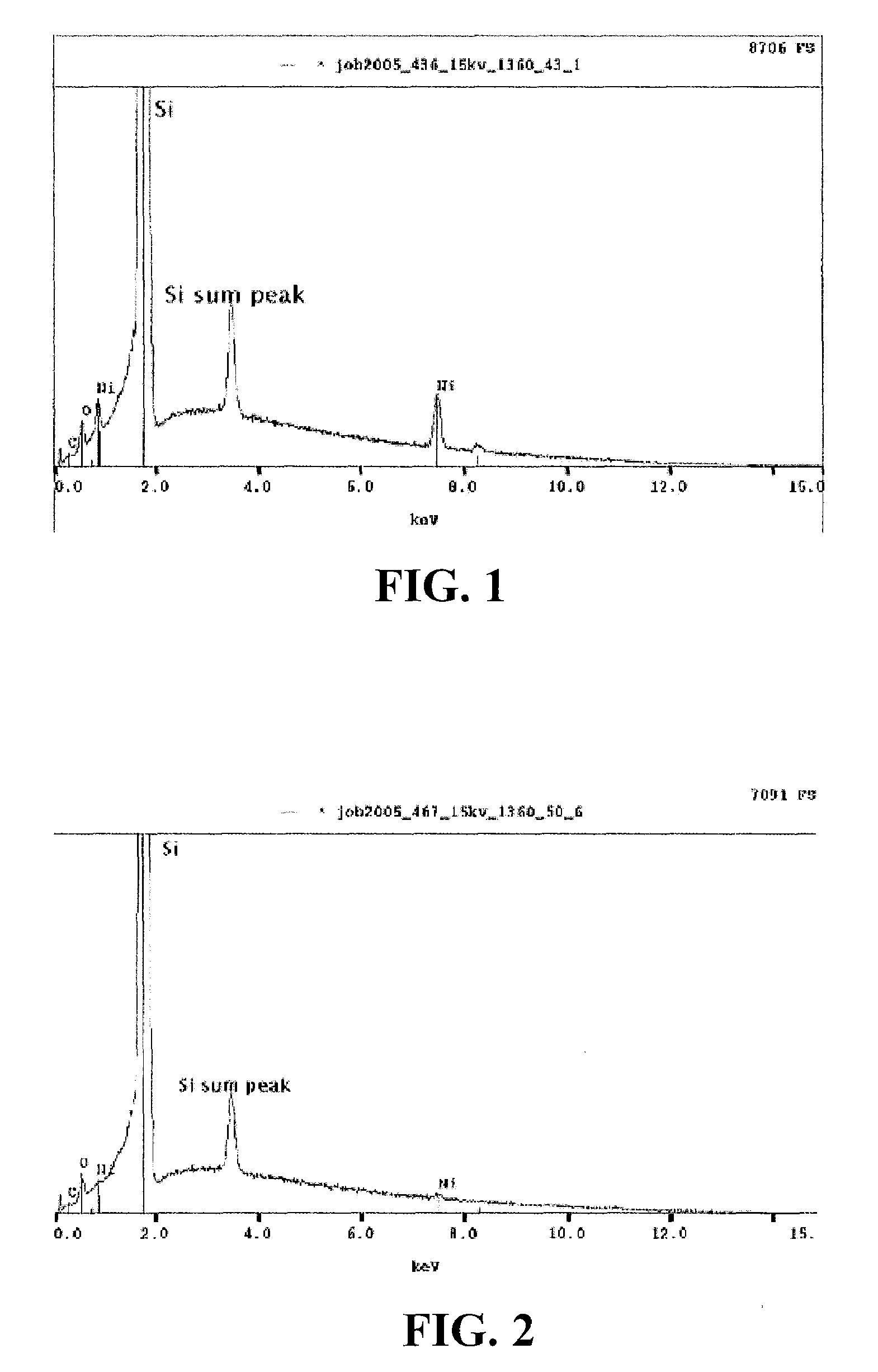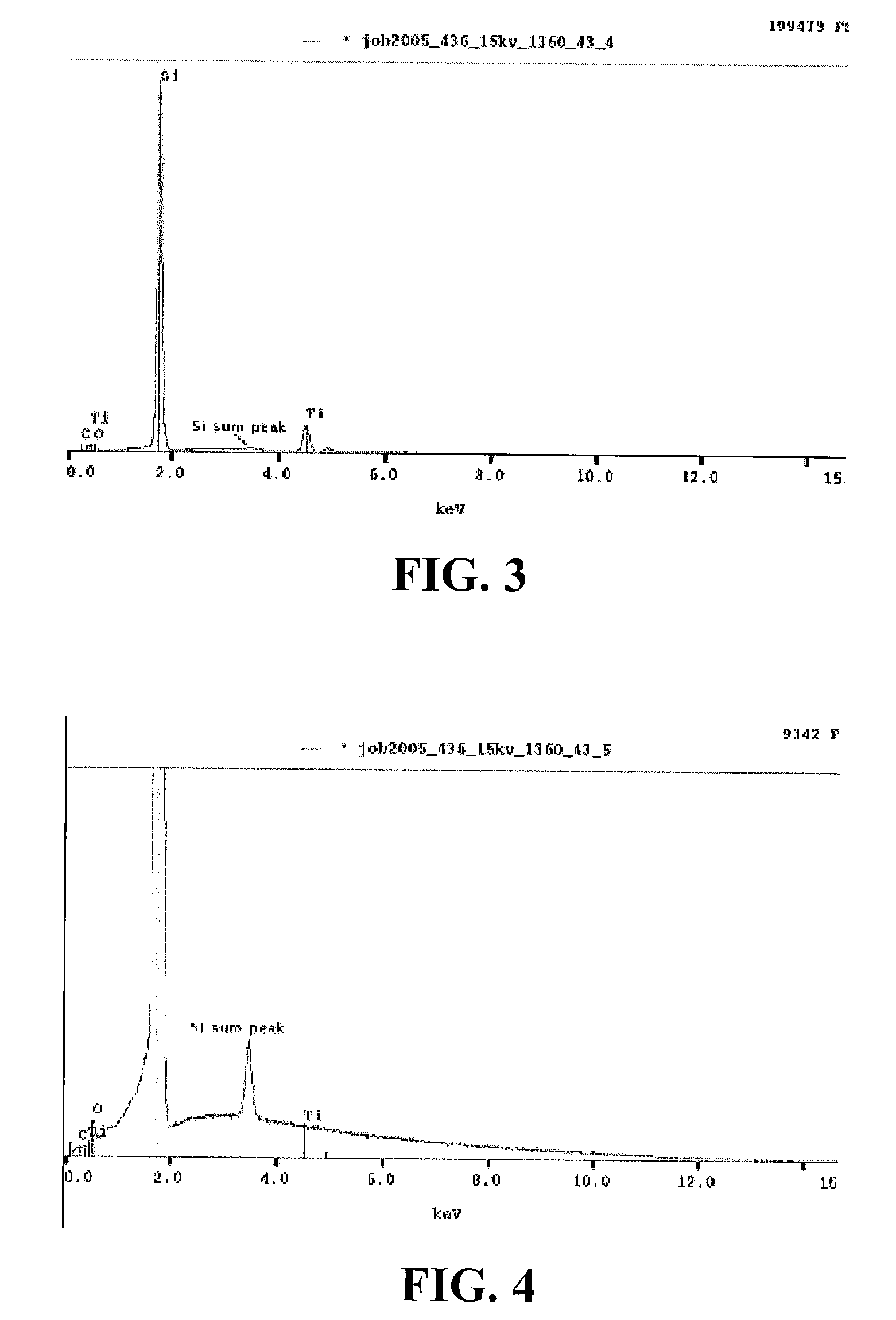Compositions and methods for selective removal of metal or metal alloy after metal silicide formation
a technology of metal silicide and composition, which is applied in the field of composition and methods for selective removal of metal or metal alloy after metal silicide formation, can solve the problems of increased resistance at the interface, damage to the substrate surface, and difficulty in further minimizing the size of the source/drain region
- Summary
- Abstract
- Description
- Claims
- Application Information
AI Technical Summary
Benefits of technology
Problems solved by technology
Method used
Image
Examples
example 1
[0080]Compositions 1-15 were made up according to the formulations in Table 2 below, wherein the percentages of the respective ingredients are by weight, based on the total weight of the composition, and wherein the weight percentages of all ingredients total to 100 weight percent.
TABLE 2CompositionHBF4H3BO3Oxalic AcidHClH2OH2O21004.8%0.75%Balance12%20.48%2.40%31.20%40.60%50.30%60.12%70.05%81.20%2.40%91.20%100.60%110.30%120.12%130.05%142.40%2.40%151.20%
[0081]The compositions were evaluated as etchants for various substrates including titanium nitride (TiN), polysilicon (Poly Si), thermal oxide dielectric material (TOX), tetraethylorthosilicate (TEOS), silicon nitride (SiN) and nickel silicide (NiSi). Each of the substrates was processed at 40° C. for 15 minutes and etch rates were determined in Angstroms per minute (Å / minute). Etch rates for all Compositions 1-15 were >5000 Å / minute on cobalt metal, and were >4000 Å / minute on nickel metal. Table 3 below shows the etch rate data.
TABL...
example 2
[0083]Energy dispersive x-ray spectroscopy studies were conducted on a silicon substrate having a film of nickel silicide thereon at a thickness of approximately 255 Angstroms.
[0084]FIG. 1 is an energy dispersive x-ray spectroscopy graph for a control sample of the silicon substrate having a NiSi film thereon. Significant nickel peaks are present in the graph.
[0085]FIG. 2 is an energy dispersive x-ray spectroscopy graph for the NiSi film on silicon substrate sample, as processed with Composition 7 of Example 1 for 15 minutes at 40° C. In comparison with the graph of FIG. 1, the nickel peaks are substantially absent in the graph of FIG. 2, indicating that the NiSi film (˜255 Angstroms) has been etched away. Scanning electron microscopy (SEM) was conducted on the sample, and provided cross-sectional images that also confirmed that the NiSi layer had been removed by the etching composition.
example 3
[0086]Energy dispersive x-ray spectroscopy studies were conducted on a silicon substrate having a film of titanium nitride thereon at a thickness of approximately 1,000 Angstroms.
[0087]FIG. 3 is an energy dispersive x-ray spectroscopy graph for a control sample of the silicon substrate having a TiN film thereon. A significant titanium peak is observed.
[0088]FIG. 4 is an energy dispersive x-ray spectroscopy graph for the TiN film on silicon substrate sample, as processed with Composition 14 of Example 1 for 15 minutes at 60° C. In comparison with the graph of FIG. 3, the titanium peak is substantially absent in the graph of FIG. 4, indicating that the TiN film (˜1000 Angstroms) has been etched away. Scanning electron microscopy (SEM) was conducted on the sample, and provided cross-sectional images that also confirmed that the TiN layer had been removed by the etching composition.
PUM
| Property | Measurement | Unit |
|---|---|---|
| temperatures | aaaaa | aaaaa |
| temperatures | aaaaa | aaaaa |
| temperatures | aaaaa | aaaaa |
Abstract
Description
Claims
Application Information
 Login to View More
Login to View More - R&D
- Intellectual Property
- Life Sciences
- Materials
- Tech Scout
- Unparalleled Data Quality
- Higher Quality Content
- 60% Fewer Hallucinations
Browse by: Latest US Patents, China's latest patents, Technical Efficacy Thesaurus, Application Domain, Technology Topic, Popular Technical Reports.
© 2025 PatSnap. All rights reserved.Legal|Privacy policy|Modern Slavery Act Transparency Statement|Sitemap|About US| Contact US: help@patsnap.com


